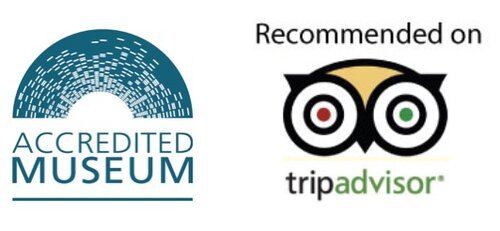Hello! My name is Zayn Elmasry, and I’m from Chicago and studying at Northwestern University. In my time researching at the Andrew Carnegie Birthplace Museum here in Dunfermline, I found some interesting tidbits about millionaire philanthropist Andrew Carnegie.
While sifting through a box of miscellaneous casket reports and old papers, an old Eastbourne newspaper clipping from May of 1905 caught my eye ["Stray Notes." Eastbourne Chronicle (Eastbourne, East Sussex), May 20 1905. The British Newspaper Archive.] Between all the thanks and appreciation the city offered to Andrew Carnegie, one paragraph questions just how beneficial the newly constructed Carnegie Library really is. The clipping doesn’t dare to venture much further as any criticism was evaluated as unhealthy.
Eastbourne Chronicle, May 20 1905. The British Newspaper Archive
Inspired to look deeper, an evaluation of Carnegie’s philanthropy shows not only more criticism but also greater undertakings taken to better the world based on his own early childhood.
Led by the principles woven in his book Gospel of Wealth, Carnegie outlines the philanthropic duties of the wealthy, and inadvertently built the structure of a fairly new concept only coined in 2006 - Philanthrocapitalism. Carnegie’s styles and methods used aboard his philanthropic quest had such great chemistry with his business ventures, that he also incidentally created the bare ideas that uphold modern philanthropy in business such as Corporate Social Responsibility and the Social Responsibility of Business.
During the journey of doing good, he wasn’t without some interesting quirks and concerns. One of the more interesting cases is when Carnegie was appointed as a delegate for a peace conference by sitting US President Benjamin Harrison (1889). During the conference, it was uncovered that Carnegie was producing armor plates for US warships commissioned by the very same Benjamin Harrison [Patterson, David S. “Andrew Carnegie’s Quest for World Peace.” Proceedings of the American Philosophical Society 114, no. 5 (1970): 371–83. http://www.jstor.org/stable/985802.]
He was a revolutionary philanthropist, stretching the bounds and possibilities of philanthropy.
Cartoon of Carnegie
Footnotes & Further Reading:
1 "Stray Notes." Eastbourne Chronicle (Eastbourne, East Sussex), May 20 1905. The British Newspaper Archive
2 Patterson, David S. “Andrew Carnegie’s Quest for World Peace.” Proceedings of the American Philosophical Society 114, no. 5 (1970): 371–83. http://www.jstor.org/stable/985802.
Slyck, Abigail A. van. “‘The Utmost Amount of Effectiv [Sic] Accommodation’: Andrew Carnegie and the Reform of the American Library.” Journal of the Society of Architectural Historians 50, no. 4 (1991): 359–83. https://doi.org/10.2307/990662.
Cohen, Donna K. “Andrew Carnegie and Academic Library Philanthropy: The Case of Rollins College, Winter Park, Florida.” Libraries & Culture 35, no. 3 (2000): 389–413. http://www.jstor.org/stable/25548838.








